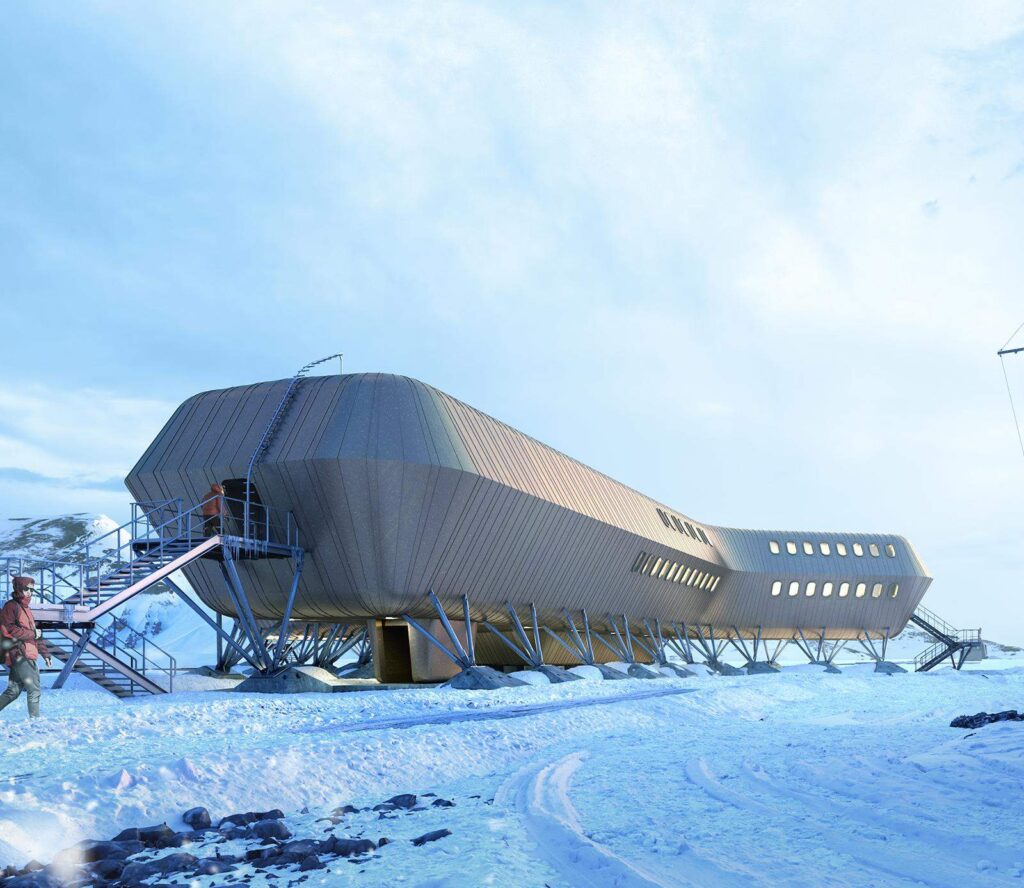The project was important because any company buying land in Indonesia must obtain government approval by presenting not only a business plan but also a development plan. We realized the importance that facilities built in a hitherto pristine landscape would have. Hence, instead of large hotel molochs, the project included 20 individual villas and residences and one administrative and restaurant building. It was also the first time that the developer did not specify a minimum number of facilities or m2 to be sold, but only a maximum. He did not want the islands to become crowded, built-up, and lose their deserted charm. With this guideline, we went further and in designing the buildings, the view was suggested to a large extent, locating them on islands so that each villa is set apart from each other to maintain the privacy of guests.
The second important common goal was ecology. The buildings were intended to be zero-emission, self-sustaining and not to have a negative impact on the local ecosystem. The Anambas Islands are currently covered by a dense jungle that is home to a variety of insects, birds, and lizards. Due to their small size and distance from the mainland, there are no major mammals on them. Instead, around the islands, underwater, there is a lively and rich coral reef. Installation projects, therefore, had to provide users with high comfort, but without compromising on nature. Electricity was provided through the use of photovoltaic panels. Equatorial sunshine and low cloud cover ensured tremendous efficiency. Drinking water, on the other hand, will be sourced from the surrounding sea, then desalinated, and after consumption, treated and put back into circulation. They also took advantage of the islands’ landscape by running all utilities under the planned paths – to avoid additional logging – and by locating the retention tanks and treatment plants at the highest point on the island, from which everything will continue to spread by gravity.
Conditions were exceptional. Until now, we have been accustomed to working in relation to the context – the surrounding buildings or the history of a place. Since there was a lack of positive examples of regional architecture, we decided to create such a style from scratch. It began with a comprehensive study of the vernacular architecture of the entire South China Sea basin. Many examples came from nearby Malaysia and Sumatra, where the spectacular development of wooden architecture took place in the early 20th century. Solutions long known on other islands had to be adapted and transformed into a modern form. The most interesting elements for us were those resulting from the individual approach to weather conditions and the equatorial climate. One of the common features of the development at this part of the Pacific Ocean is the elevation of the wooden pole structure above ground level. They can be found in both traditional Batak and Toray architecture or the Rumah adat and Malay House building styles. This elevation of the buildings primarily protected them from water during monsoons, allowed them to be built in floodplains and swampy areas, but also protected the interior from insects. The project decided to use the same theme but for a different purpose. On the first floor, the living space was placed between an openwork column structure to blur the boundary between the interior and exterior of the building. The jungle, rocks, and beaches surrounding the building are also meant to enter the building, intermingling with the villa visually. There are an absolute minimum of walls between the columns, and the large glazing can be opened and folded at will.
Also, extending the roof ridge in front of the gable walls is a common motif in traditional Indonesian buildings. This element was not only a decorative part but also a protection from monsoon rains. Overhanging eaves in extremely heavy rains prevented moisture from entering the building, but in the case of our villas, they also protect large glazed areas from the equatorial sun.
Also in terms of materials, it was decided to use the best local raw materials – exotic wood was combined with volcanic stone. It’s a set also befitting of the island itself, densely covered with trees and palm trees, mixed with rocks and boulders comparable in size to cars. Regarding the exact design of the buildings, we worked with designers from Coconut Groove Interiors, a Thai office that specializes in finishing hotels in that part of Asia. Their design was intertwined with the study we prepared, which was supplemented with detailed specifications and equipment elements.










